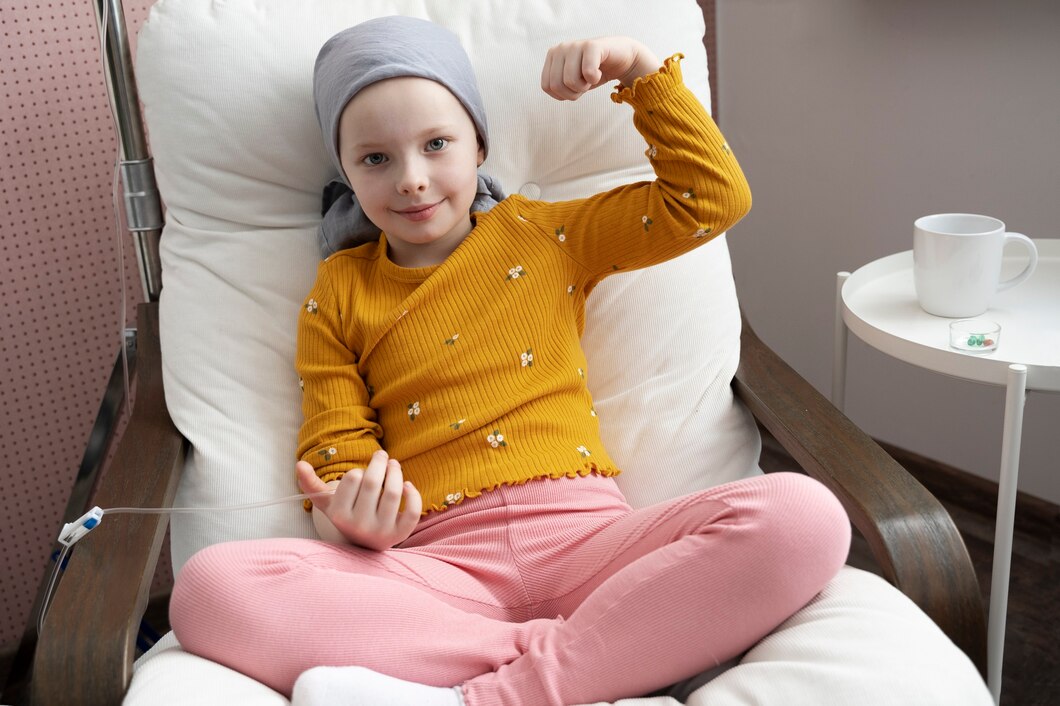Despite significant advancements in medical technology and treatment options, childhood cancer continues to pose a major global health challenge. According to the World Health Organization (WHO), cancer is the leading cause of death among children and adolescents aged 5 to 14 years. In 2020 alone, an estimated 400,000 new cases of childhood cancer were diagnosed worldwide. A disproportionate number of these cases occur in low- and middle-income countries like Botswana, where limited access to early detection and treatment has contributed to higher mortality rates. This disparity in healthcare access highlights the critical need for improved cancer strategies, including early detection, accurate diagnosis, and timely treatment.
The State of Childhood Cancer in Botswana
Botswana, like many other developing nations, faces a growing burden of childhood cancer. While the country has made strides in improving its healthcare infrastructure, the lack of specialized pediatric oncology facilities, healthcare professionals, and resources hampers the fight against childhood cancer. Many children are diagnosed at later stages when treatment options are limited, leading to poor outcomes.
A major factor contributing to delayed diagnosis is the lack of awareness about the early signs of childhood cancer among parents and healthcare providers. Additionally, myths and misconceptions about cancer, coupled with limited access to healthcare in rural areas, exacerbate the issue. This situation results in lower survival rates, as compared to high-income countries where childhood cancer survival rates have significantly improved due to early diagnosis and advanced treatment options.
Addressing Myths and Raising Awareness of Early Signs
One of the key obstacles in the early detection of childhood cancer in Botswana is the prevalence of myths surrounding the disease. Many families, especially in rural areas, may not recognize the signs of cancer or may attribute them to less severe conditions. This lack of awareness often leads to delays in seeking medical help.
Common myths include the belief that childhood cancer is caused by evil spirits or that it is contagious. These misconceptions can create stigma around the disease, preventing families from seeking timely treatment. Education campaigns aimed at dispelling these myths are crucial to improving early diagnosis.
Understanding the early signs of childhood cancer is essential for parents, caregivers, and healthcare providers. While symptoms can vary depending on the type of cancer, some common signs include:
- Unexplained weight loss
- Persistent pain in bones, joints, or back
- Lumps or swelling, especially in the abdomen, neck, or underarm
- Frequent infections or fever
- Excessive bruising, bleeding, or rashes
- Headaches with vomiting, especially in the morning
- Sudden changes in vision
Recognizing these signs and seeking medical attention early can significantly improve the chances of survival. However, early diagnosis is only part of the solution—there must also be adequate healthcare infrastructure to treat these children effectively.
Diagnosis and Treatment Challenges
In Botswana, childhood cancer diagnosis often occurs at a more advanced stage, reducing the effectiveness of treatment. The country’s healthcare system faces numerous challenges, including limited access to pediatric oncology specialists and diagnostic tools, especially in rural areas. Many families must travel long distances to reach hospitals equipped to handle cancer cases, which can delay diagnosis and treatment.
Furthermore, once a diagnosis is made, the treatment options available may be limited. Chemotherapy, radiation, and surgery—essential components of cancer treatment—are not always readily available or affordable for many families. While Botswana’s government has made efforts to provide cancer treatment, the demand far exceeds the current capacity of the healthcare system. Collaborative efforts with international partners and organizations are vital to addressing these gaps and expanding access to quality cancer care.
Moving Forward: Priorities for Botswana
Improving childhood cancer outcomes in Botswana will require a multi-faceted approach that addresses the underlying causes of late diagnosis and limited treatment access. Key priorities include:
- Raising Awareness: National campaigns must be launched to educate parents, caregivers, and healthcare providers about the early signs of childhood cancer and the importance of early diagnosis. This includes dispelling myths that prevent families from seeking timely treatment.
- Strengthening Healthcare Infrastructure: Botswana needs to expand its pediatric oncology capacity by training more healthcare professionals and investing in diagnostic tools and treatment facilities, particularly in underserved regions.
- Collaborating with Global Health Partners: Working with international organizations and healthcare institutions to improve access to specialized care, as well as provide funding for cancer treatment, can help bridge the gap between diagnosis and treatment.
- Promoting Early Detection: Screening programs for early detection in children can significantly reduce mortality rates. Ensuring that rural and urban communities alike have access to screening services will be critical to improving outcomes.
Childhood cancer in Botswana presents a complex challenge, but with concerted efforts to raise awareness, improve healthcare infrastructure, and promote early detection, significant progress can be made. Addressing the disparities in healthcare access and tackling the myths surrounding cancer will be crucial steps in reducing the burden of childhood cancer and improving survival rates for Botswana’s children.










